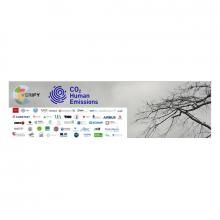The CHE project
Under the European Green Deal, Copernicus is exploring how it can support EU Member States as well as the wider global community to monitor their emissions with observation-based information. Such a capacity would deliver consistent and reliable information to support informed policy- and decision-making processes, both at national and European level. The European Commission, with the support of a dedicated CO2 Monitoring Task Force, therefore, plans to establish an observation-based operational anthropogenic CO2 emissions Monitoring and Verification Support capacity (CO2MVS) as part of its Copernicus programme. Discussions coordinated by the European Commission started in 2015, with activities becoming more concrete in 2018 with the kick-off of the Carbon Dioxide Human Emissions (CHE) project. CHE is coordinated by the European Centre for Medium-Range Weather Forecasts (ECMWF) and funded through the EU Horizon 2020 (H2020) research programme.
CHE has been exploring how a system to monitor global carbon dioxide emissions related to human activity could work, including advising the European Commission on future developments. In parallel, the H2020-funded VERIFY project, led by the Laboratory of Climate and Environmental Sciences (LSCE) in France, is investigating how to estimate greenhouse gas emissions using the current observation infrastructure for the European area.
While the CHE project will finish at the end of this year, it will be followed up by a new project that will provide a prototype system for a new Copernicus carbon dioxide service (CoCO2), further developing carbon dioxide emission monitoring capabilities. ECMWF will also lead CoCO2 with the plan to embed the service into the Copernicus Atmosphere Monitoring Service (CAMS) in the next phase of Copernicus, which will start in 2021.







